Recently and over the years I’ve had a few instances where having survival gear in my car has really helped. Although I’m not always consistent on what gear I actually have due to multiple vehicles in our family, there are a few things that have made a significant difference.
Here are some of my favorite items for every day carry in the car:
In a survival situation their value would dramatically increase.I’ve also included some other odds and ends that seem pretty logical and common sense…. But I’ve noticed not too many folks actually carry or have them in mind for survival/preparedness use.
Jump Starter 12V
I’m sure most of you are sick of hearing about this as I constantly write about it. However, it is one of the best purchases I have made this year! This thing has saved my bacon, and helped a few stranded motorists along the way. I ended up with a dead battery during our first blizzard this winter, and even almost totally discharged, my jump starter STILL started my vehicle. It also has an outlet for other 12v devices, and a built in flashlight. Some come with compressors. You can get a really decent one for $50.
Multi-Tool
There are so many multi-tools out there I won’t try to name them all. Leatherman and Gerber are well known. Personally I have a Victorinox that I really like. I use it all the time, especially the Phillips head screwdriver, and the serrated knife blade. I have found that although most own one, very few people actually carry it WITH them during the day. I lend mine out a bunch.
If you have one strap it to your belt, or throw in it in your glove box or purse. In an emergency it could be your only toolbox for a long time.
Large Flat-Bladed Screwdriver
Beyond opening paint cans, these super tools can pry, dig, wedge, chisel, and lever things loose. Get a good quality one that has the handle made of indestructible materials so you can hit it with a hammer and generally abuse it.
Also make sure it has a thick shaft so you can pry. In a pinch it is also a weapon! Throw one in the trunk, backpack or BOB they are light weight and easy to carry. Sure most multi-tools have a flat driver, but this one you can really beat up without ruining the whole pocket tool kit.
Battery Powered Alarm Clock
Not only great for travel! Power outages suck and you lose your computer time. After the cell phone battery dies you have either your watch or nothing to tell time. My watch has crap for an alarm, so I use a battery powered alarm clock. There are also wind-up alarm clocks for travel but the battery powered ones seem to last longer and tell time more accurately. They are also so light weight and great for many other tasks. If you have a watch you probably don’t need this but some of us don’t wear one. During a power outage you still have to get up in the morning, right? My battery powered clock runs about 8-12 months on one AA battery.
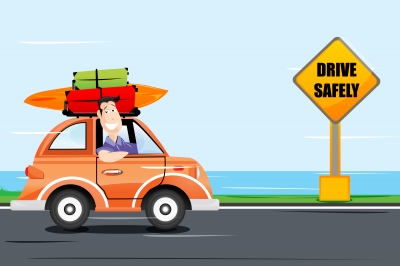
Image courtesy of digitalart / FreeDigitalPhotos.net
Surefire Flashlight or other Tactical Flashlight
No a Maglight will not suffice. I specifically said Surefire. Period. There are other good flashlights out there, but few even compare to a Surefire from my experience. I have owned Pelicans, Maglights, Innova, Streamlights….just about every fancy super flashlight that has come down the pike. Dig deep in the wallet and get one. You will not be disappointed. It works when you drop it, get it wet, etc these lights are rugged and I really like the brightness and long-lasting CR123A lithium batteries. The light bulb is LED and doesn’t crap out when you need it the most. I have a L2, a G2 and a E2 and am really pleased with them even though each can be sort of cumbersome in my pocket. I bought my L2 used on eBay for a good price.
Hammer
It doesn’t matter what brand as long as you can hit things with it. Harbor Freight has hammers on sale all the time for less than $7-$8 so don’t go dropping big money on one. It just needs to hit things like nails, metal, wood, and such. There are some neat survival hammers out there that have some cool features, but really any hammer will be better than none. Hitting tent stakes with a rock works, but hitting a padlock with one sucks beans. Couple the hammer with your large flat bladed screw driver and you can just about get into anything, break anything, or fix anything. Side note: a variety of hammers might be even better.
Laptop/Tablet with 3G or 4G wireless card
This is the ultimate information gathering tool, record keeper, communicator, and entertainment tool all in one package. Refurbished laptops or import tablets can be had for $70- $200 and the WiFi cards are only $40 a month with Cricket. Unless you have a large screen Android or iPhone, there is no other way out there to stay in touch with what is going on. You can email, you can look up useful YouTube videos on any subject, you can go to the FEMA website, check bank accounts, etc etc. Couple this with your Jump Starter and you can get online anywhere and re-charge the laptop battery for extended periods of time in remote places.
Spare House and Car Keys
Seems pretty simple right? I don’t know any starving locksmiths, however. This is a no brainer but easily overlooked. Spare keys to all your locks might take a while to track down in an emergency, so make a ring of spares and throw it in your safe. You might even hide a spare key for your car or home in a locking realtor box or with a very trusted member of nearby family or friends.
Household Battery Tester
Saves time and hassle by showing you which batteries have what charge left. Simple! Newer models can test watch batteries and the Lithium CR123A types as well. Another thought this brings up is using rechargeable batteries instead of throw aways.
Spare Jacket and Knit Cap/Gloves
Spare meaning beyond what you normally wear. You never know when you are going to get wet, sweaty, or the temperature suddenly dramatically drops. Recently here in Colorado we had a cold snap that followed a significant snow storm. Temperatures here were lower than in Alaska! My winter jacket didn’t cut it and I had to buy another. I also had to wear extra socks, thermal underwear, and two knit caps. I work outside both night and day at times, and it was very cold. I found that my normal gloves didn’t cut it either and had to dig up a second pair to wear over my current pair. Wow very cold! We had a few nights wear it was -7 degrees PLUS wind chill, so we are talking cold. Ever touch metal when it’s that cold? It hurts pretty badly. We also used a plug in heater to keep the basement warm as freezing pipes can really ruin your day.
Waterproofing Agents
Wax, Snow seal, aerosol sprays, etc. I had to re-waterproof my “waterproof” boots during the thawing out period after our recent storms. Luckily I had the products to do it and had dry feet the rest of the week. In a survival situation either on the road or hiking out, where are you going to acquire snow seal wax or shoelaces? Plan ahead, it just makes it better.
Power Inverter
This is like going from the stone age to the modern age with the flick of a switch. Power inverters convert 12 Vdc to 120 AC with the use of your car battery. You can use this in addition to having a jump starter. What is it good for? Charging or powering any household device up to a point…. Depends on your car battery and the size inverter you buy. You can get one from $40 up to $600 depending on what you want. These are used on RV’s and in boats. Great for hunting trips, camping and any emergency where household electricity would be useful.
Folding Shovel
Cold Steel and Glock both make entrenching tools or survival shovels that are well made. Even REI sells a little camping trowel that can really be used for many purposes. Digging a snow cave, digging out of mud or snow, making shelter, or even as a weapon! The Cold Steel shovel can be sharpened to a knife edge or thrown much like a tomahawk. The Glock shovel is super lightweight, has a hand wood saw, and is a decent well made tool for snow or digging in the ground. Many soldiers including special forces have used these items to save their own life in many ways. A tomahawk is very similar; just not as versatile as the shovel in that it isn’t a very good digging tool….heck, why not have one of each?
Cell Phone Charger
There are a few types: the type that plugs into the accessory/cigarette lighter, the type that plugs into AC plugs and the type that is a battery with USB port built in. All are nice to have and without them many of your electronics would be useless like: GPS, Tablet, Laptop, Camera, Cell phone, etc. Yet another variety of items where “why not have one of each” might be a good mantra.
Compass and GPS
One of each, ‘nuff said.
Toilet Paper and Paper Towels
The primary use of TP is well known at least around these parts…. But there are other uses; wick for a survival stove, kindling, dressing minor wounds, cleaning firearms, used to pad fragile items etc. Paper towels are even more versatile. This is so overlooked but is handy for maintaining hygiene and personal morale.
Other Odds and Ends
My goal is NOT to make you look like you live in your car! But many items can be packed in a very small container or space if you are creative. Anyway, maybe you already have these items, but maybe not. Either way many are worth honorable mention!
- WD40
- Duct Tape or Electrical Tape
- Bottled Water
- Beef Jerky or snack food
- First Aid Kit
- Saline Solution, Contact lenses or spare glasses
- Emergency roadside kit with flares
- Survival Knife
- Spare work and leisure clothes or shoes
- Deck of Cards
- Blowgun, crossbow, bow, sling, slingshot or firearm for gathering food or protection
- Pepper Spray
- Spare Gas Can and Tire Fix a Flat
- Car Jack and Spare Tire
- Spare belts, fuses and basic tools
- Snow Chains or carpet remnant pieces
- Cash both coins and bills
- Wallet, ID & credit cards (many people go places without them in their pocket!)
- Padlock and chain to secure items overnight
Please be sure to check out our selfdefenseandsurvivalforum on Yahoo! Groups for more articles and interactive discussions.
Copyright 2008 by duracles. Reprint permission granted if article remains completely intact.



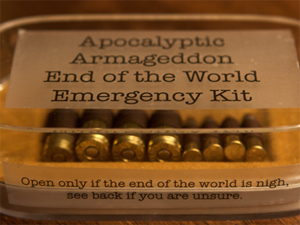



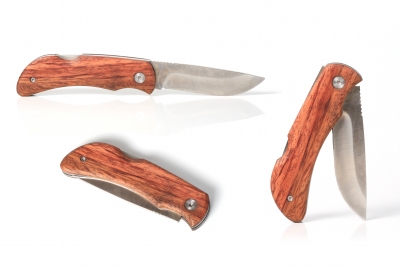





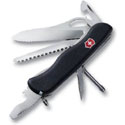


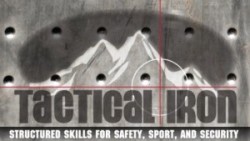


Recent Comments